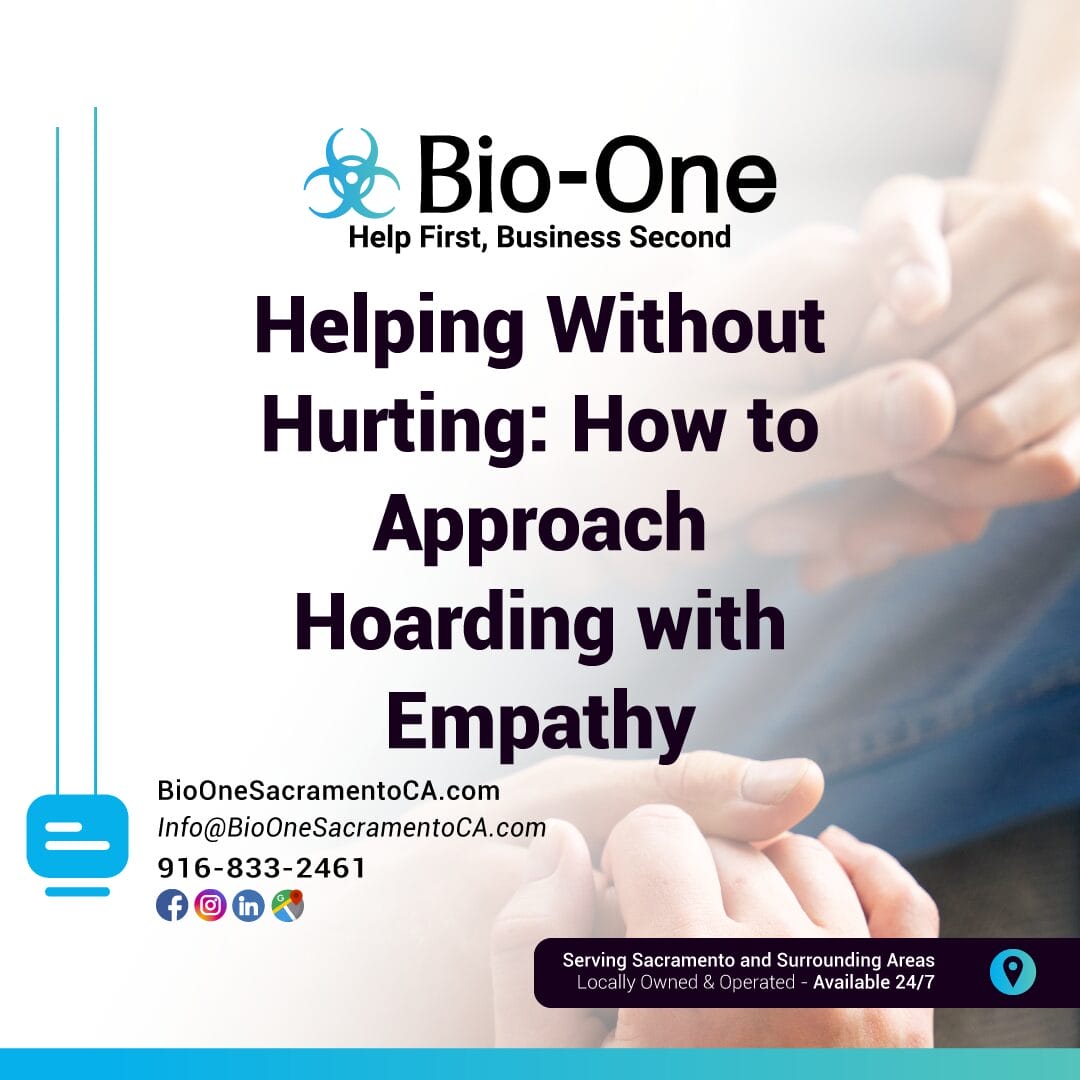
Hoarding can be a challenging topic to discuss, especially when it involves someone you care about. Watching a loved one struggle with hoarding can leave you feeling helpless, overwhelmed, and uncertain about what to do. But approaching the situation with understanding, patience, and compassion is key to providing effective hoarding support.
This guide will help you better understand hoarding, offer strategies for starting difficult conversations, and highlight steps you can take to offer meaningful help without causing harm.
Understanding Hoarding and Its Impact
Hoarding is more than keeping too many things; it’s a complex mental health condition that can affect a person’s daily life, relationships, and well-being. It’s often linked to anxiety, depression, or trauma, making it difficult for the individual to part with possessions, no matter their condition or value.
The living conditions created by hoarding often pose safety risks. Clutter can lead to falls, fire hazards, and even biohazards, depending on the severity of the situation. These dangers highlight the importance of addressing hoarding in a supportive and proactive way.
Step 1: Educate Yourself Before Taking Action
Before initiating a conversation, take time to learn about hoarding. Understanding what your loved one is going through will help you approach them with empathy and avoid judgment. The International OCD Foundation provides valuable resources on hoarding disorder, helping you see it from their perspective. This foundational knowledge can build a bridge of understanding, an essential tool for effective communication.
Consider reading expert articles or consulting with local professionals like therapists who specialize in hoarding behaviors. By learning more, you’ll not only feel better equipped but also show your loved one that your intention comes from a place of care, not criticism.
Step 2: Approach the Conversation Gently
Starting a conversation with someone who hoards can feel intimidating. The key is to foster trust and safety. Here are a few tips to guide you:
- Choose the Right Time and Place
Find a quiet, non-confrontational setting where you can speak privately. Avoid bringing up the issue when tensions are high or in a hurried environment. - Use “I” Statements
Rather than pointing fingers, share your concerns from your own perspective. For example, say, “I’ve noticed that you seem stressed about the clutter. How can I help?” instead of “You need to clean this up.” - Avoid Criticism or Blame
Refrain from labeling their behavior as “messy” or “dirty.” These terms can come across as shaming and may shut down communication. Focus on the problem, not the person. - Listen Without Judgment
Allow your loved one to share their feelings without interjecting. Sometimes, simply feeling heard can be the first step toward progress.
Step 3: Offer Hoarding Support Without Being Overbearing
Once you’ve opened the conversation, explore ways to offer support. Remember, the goal is to help them feel empowered, not forced. Here are effective strategies to explore:
Encourage Professional Help
Supporting a loved one in seeking professional guidance can be a game-changer. A therapist or counselor who specializes in hoarding can provide tailored coping strategies and solutions. You can help by finding local mental health professionals or directing them to resources like SAMHSA’s Behavioral Health Treatment Locator.
Suggest a Professional Cleanup Service
Severe hoarding situations often require expert assistance. Reputable cleanup services like Bio-One Sacramento specialize in compassionate and discreet hoarding cleanup. They prioritize respect for the individual while ensuring the space becomes safe and livable again. Sharing this type of resource can relieve some burden and show your loved one that they’re not alone in this process.
Set Small, Achievable Goals
Instead of tackling the entire issue at once, focus on incremental progress. For example, suggest sorting through one small area together. This makes the task less overwhelming and builds a sense of accomplishment. Tools like checklists or decluttering apps can guide the process without feeling overbearing.
Step 4: Practice Patience and Empathy
Change doesn’t happen overnight, especially when dealing with deeply ingrained habits tied to emotional struggles. It’s crucial to practice patience and continue showing empathy, even if progress feels slow. Celebrate small victories along the way and reassure your loved one that you’re there for them unconditionally.
If you find yourself feeling frustrated or overwhelmed, don’t hesitate to seek support for yourself. Talking to a therapist or joining a support group for friends and family of individuals with hoarding disorder can provide valuable encouragement and advice. It’s important to prioritize your well-being as you support your loved one.
Bio-One of Sacramento is Ready to Help!
By approaching hoarding with empathy and understanding, you can help your loved one move toward a healthier and more secure life. While the process may not be easy, your willingness to offer compassionate hoarding support can make all the difference in their path to recovery.
For more information on professional hoarding cleanup services, visit Bio-One Sacramento. Additionally, resources like the International OCD Foundation offer valuable insights into hoarding disorder and practical guidance for families navigating these challenges.


